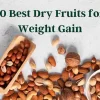Food Calories Chart | What’s In Your Fruit, Veg, Meat And Other Daily Produce?
Introduction
Hello, wellbeing aficionados! Have you ever wondered what lurks in the foods you eat daily? The food calorie chart is your new best friend as you work toward a healthier lifestyle. The calorie content of your favourite vegetables, meats, and other foods is revealed in this chart. This blog will separate everything, making the entire thought of calorie counting way less befuddling. Prepare to delve into the world of food calories and learn how it can assist you in making healthier and more intelligent choices.
Table of contents
- Introduction
- Calories: An Overview Disentangling the Mystery
- Why Utilize a Food Calories Graph? Opening the Force of Informed Eating
- Food Calories Chart For Fruits and Vegetables
- Food Calories Chart For Meat and Protein Sources
- Food Calories Chart Dairy and Alternatives
- FAQ’s For Food Calories Chart
- Related Link:-
- Conclusion:
Calories: An Overview Disentangling the Mystery
Calories – the minuscule units that power our bodies and impact our general prosperity. Let’s journey to understand the fundamentals of calories and deconstruct these energy nuggets.
Characterizing the Calorie:
- A calorie is a unit of estimation for energy.
- With regards to food, it addresses the energy content that our bodies get when we devour and process it.
How Calories Fuel the Body:
- Calories are the fuel that keeps our bodies running, controlling fundamental capabilities like breathing, flowing blood, and keeping up with internal heat levels.
- When we eat, our bodies separate the food into supplements, delivering calories that are utilized for energy.
Adjusting Act:
- The harmony between the calories we consume and the calories we consume impacts our weight.
- Consuming more calories than our bodies need can prompt weight gain while consuming more calories than we consume brings about weight reduction.
Components Calories:
- Calories come from three fundamental macronutrients: carbs, proteins, and fats.
- The number of calories per gram that each macronutrient contributes is different:
- Proteins and carbohydrates each contain 4 calories per gram.
9 calories are contained in a gram of fat.
Recognizing the Basal Metabolic Rate (BMR):
- BMR is the quantity of calories the body still needs to keep up with essential physiological capabilities.
BMR is influenced by age, gender, weight, and muscle mass.
The Importance of Being Calorie Aware:
You must know how many calories you consume to maintain a healthy weight and overall health.
People can better make informed decisions about their diet and lifestyle when they understand calories.
Certainly! Below is a simple food chart providing examples of various food categories along with their approximate calorie counts. Keep in mind that these values can vary based on serving sizes and preparation methods.
| Food Category | Examples | |
|---|---|---|
| Fruits | Apple, Banana, Orange, Berries | Varies (e.g., Apple: 95) |
| Vegetables | Carrots, Broccoli, Spinach, Cucumber | Varies (e.g., Broccoli: 31) |
| Meats | Chicken Breast, Salmon, Lean Beef | Varies (e.g., Chicken: 165) |
| Protein Alternatives | Tofu, Lentils, Greek Yogurt, Eggs | Varies (e.g., Tofu: 176) |
| Dairy and Alternatives | Milk, Greek Yogurt, Almond Milk, Cheese | Varies (e.g., Milk: 150) |
| Grains and Carbs | Brown Rice, Quinoa, Sweet Potato, Oats | Varies (e.g., Brown Rice: 215) |
| Fats and Oils | Olive Oil, Avocado, Nuts, Seeds | Varies (e.g., Avocado: 234) |
| Sweets and Treats | Dark Chocolate, Berries with Whipped Cream | Varies (e.g., Dark Chocolate: 150) |
Remember, this chart is a general guide, and individual nutritional needs may vary. Adjust portion sizes and choices based on your dietary goals and preferences. Always consult with a healthcare or nutrition professional for personalized advice.
Why Utilize a Food Calories Graph? Opening the Force of Informed Eating
Ever wondered why fitness enthusiasts and nutrition experts swear by food calories charts? Let’s uncover the compelling reasons behind incorporating this handy tool into your daily routine.
Precision in Portion Control:
- Food calories charts provide a detailed breakdown of the calorie content in various foods.
- Helps in understanding portion sizes and prevents unintentional overeating.
Weight Management Made Easy:
- For those aiming to shed or maintain weight, a food calories chart is a game-changer.
- Tracking daily calorie intake allows for better control and awareness, supporting weight managementgoals.
Nutrient Balance Awareness:
- Beyond just calories, these charts reveal the nutritional composition of foods.
- Enables individuals to balance macronutrients like carbs, proteins, and fats, ensuring a well-rounded diet.
Empowerment in Food Choices:
- Armed with knowledge from a food calories chart, individuals can make informed decisions about what to eat.
- Encourages healthier choices, leading to improved overall nutrition.
Tailoring to Personal Goals:
- Whether aiming for weight loss, muscle gain, or simply maintaining a healthy lifestyle, a food calories chart allows for personalized dietary planning.
- Tailoring food choices based on personal goals becomes more achievable.
Mindful Eating Habits:
- Using a food calories chart promotes mindful eating.
- Encourages individuals to be more aware of what they consume, fostering a healthier relationship with food.
Identification of High-Calorie Culprits:
- Helps identify foods that may be high in calories but low in nutritional value.
- Supports making smarter choices to prioritize nutrient-dense options.
Enhanced Accountability:
- Tracking calories creates a sense of accountability.
- Individuals become more conscious of their food choices, contributing to long-term positive habits.
Effective Meal Planning:
- Integrating a food calories chart into meal planning ensures a balanced and calorie-conscious approach.
- Streamlines the process of creating nutritionally sound and satisfying meals.
In conclusion, the use of a food calories chart is not just about counting numbers; it’s a powerful tool for fostering a mindful and informed approach to eating. By incorporating this simple yet effective resource into your routine, you can take charge of your nutrition and embark on a journey towards a healthier, more balanced lifestyle. Cheers to making every calorie count!
Food Calories Chart For Fruits and Vegetables
Eating a rainbow of fruits and vegetables isn’t just visually appealing; it’s a nutritional jackpot. Let’s explore the caloric content of some common fruits and vegetables, turning your plate into a palette of health.
| Fruits | Calories (kcal) per 100g | Vegetables | Calories (kcal) per 100g |
|---|---|---|---|
| Apples | 52 | Broccoli | 55 |
| Bananas | 89 | Carrots | 41 |
| Oranges | 43 | Spinach | 23 |
| Strawberries | 32 | Bell Peppers (Red) | 31 |
| Blueberries | 57 | Bell Peppers (Green) | 20 |
| Grapes | 69 | Tomatoes | 18 |
| Watermelon | 30 | Cucumbers | 16 |
| Avocado | 160 | Cauliflower | 25 |
| Pineapple | 50 | Sweet Potatoes | 86 |
| Mango | 60 | Potatoes | 77 |
| Papaya | 43 | Zucchini | 17 |
| Cherries | 50 | Brussels Sprouts | 43 |
| Kiwi | 61 | Asparagus | 20 |
| Peach | 39 | Kale | 49 |
| Pears | 57 | Cabbage | 25 |
| Plums | 46 | Butternut Squash | 45 |
| Lemon | 29 | Eggplant | 25 |
These values are approximate and can vary, so it’s always a good idea to check nutritional information on packaging or consult with a nutritionist for more accurate details. Additionally, fruits and vegetables are rich in vitamins, minerals, and fiber, providing numerous health benefits beyond just calorie content.
Apples:
- Medium-sized apple: Approximately 95 calories
- Packed with fiber, vitamins, and antioxidants, apples are a low-calorie snack that satisfies sweet cravings.
Bananas:
- Medium-sized banana: Around 105 calories
- A potassium-rich option that provides quick energy, making it an excellent pre or post-workout snack.
Berries (Strawberries, Blueberries, Raspberries):
- One cup of mixed berries: Approximately 50-85 calories
- High in antioxidants and fiber, berries are a tasty and low-calorie addition to breakfast or sacks.
Oranges:
- Medium-sized orange: About 62 calories
- Bursting with vitamin C and hydrating properties, oranges are a refreshing low-calorie citrus option.
Carrots:
- One cup of carrot sticks: Around 50 calories
- Packed with beta-carotene, carrots are a crunchy, low-calorie snack that supports eye health.
Broccoli:
- One cup of broccoli florets: Approximately 31 calories
- A nutrient powerhouse, broccoli is low in calories and high in fiber, vitamins, and minerals.
Spinach:
- One cup of raw spinach: About 7 calories
- An incredibly low-calorie leafy green rich in iron, calcium, and various vitamins.
Cucumbers:
- One cup of sliced cucumbers: Around 16 calories
- Hydrating and low-calorie, cucumbers are a crisp addition to salads and snacks.
Watermelon:
- One cup of watermelon cubes: Approximately 46 calories
- Perfect for hydration, watermelon is low in calories and high in water content.
Grapes:
- One cup of grapes: About 104 calories
- A sweet and satisfying snack, grapes offer antioxidants and natural sugars.

Food Calories Chart For Meat and Protein Sources
Meat is a primary source of proteins, which are the building blocks of a healthy and robust body. For a balanced diet, look at the calories in common meats and find protein-rich alternatives.
| Meat/Protein Source | Calories (kcal) per 100g |
|---|---|
| Chicken Breast, Skinless | 165 |
| Turkey Breast, Skinless | 135 |
| Salmon (Wild-caught) | 206 |
| Tuna (Canned in water) | 116 |
| Beef (Ground, 90% lean) | 250 |
| Pork (Lean) | 143 |
| Lamb (Lean) | 143 |
| Eggs (Whole) | 155 |
| Tofu | 144 |
| Lentils (Cooked) | 116 |
| Chickpeas (Cooked) | 164 |
| Quinoa | 120 |
| Greek Yogurt (Non-fat) | 59 |
| Cottage Cheese (Low-fat) | 72 |
| Almonds | 576 |
| Black Beans (Cooked) | 132 |
| Cod | 82 |
| Shrimp | 99 |
| Whey Protein | 80-100 |
Breast of Chicken:
- Skinless, boneless chicken bosom (3.5 ounces): Approximately 165 calories – A source of lean protein that supports muscle health and repair and contains high-quality amino acids.
Ground Beef, 90 percent lean:
- 3.5 ounces of cooked ground beef: 250 calories; high in zinc, iron, and protein; select leaner cuts for a healthier choice.
Salmon:
- A 3.5-ounce baked or grilled salmon fillet: Approximately 206 calories – A fatty fish that is high in omega-3 fatty acids and provides high-quality protein.
Tofu:
- 1 cup of firm tofu: A vegetarian protein source that is packed with essential amino acids and has about 176 calories.
Eggs:
- A big, hard-boiled egg: Around 68 calories
- A flexible protein source with a total amino corrosive profile.
Turkey Breast:
- Skinless, boneless turkey bosom (3.5 ounces): A lean chicken substitute with approximately 135 calories that provides protein without excessive fat.
Yogurt: Greek
- One cup of non-fat Greek yogurt: Around 100 calories
- A dairy-based protein source rich in probiotics and calcium.
Tenderloin of Pork:
- Simmered pork tenderloin (3.5 ounces): A lean cut of pork with approximately 143 calories that provides protein, B vitamins, and minerals.
Lentils:
- 1 cup cooked lentils: Around 230 calories
- A plant-based protein force to be reckoned with, high in fiber, and reasonable for different dishes.
Cabin Cheese:
- One cup of cottage cheese with low fat: A dairy product with about 220 calories and a lot of protein, calcium, and other essential nutrients.
Food Calories Chart Dairy and Alternatives
Dairy and its alternatives offer a spectrum of choices for those seeking calcium-rich delights and lactose-free options. Let’s journey through the caloric landscapes of dairy and its plant-powered counterparts.
| Dairy/Dairy Alternatives | Calories (kcal) per 100g |
|---|---|
| Whole Milk | 61 |
| 2% Milk | 50 |
| 1% Milk | 42 |
| Skim Milk | 35 |
| Butter | 717 |
| Cheddar Cheese | 403 |
| Mozzarella Cheese | 300 |
| Greek Yogurt (Full-fat) | 59 |
| Greek Yogurt (Non-fat) | 59 |
| Cottage Cheese (Low-fat) | 72 |
| Almond Milk (Sweetened) | 13 |
| Soy Milk (Sweetened) | 33 |
| Coconut Milk | 230 |
| Cashew Milk | 22 |
| Yogurt (Non-fat, Plain) | 59 |
| Feta Cheese | 264 |
| Cream Cheese | 342 |
| Ricotta Cheese | 174 |
| Sour Cream | 193 |
Milk (Whole):
- One cup of whole milk: Approximately 150 calories
- A classic calcium source, whole milk also provides vitamins D and B12.
Milk (Skim/Fat-Free):
- One cup of skim milk: Around 80 calories
- A lower-calorie option that retains the calcium content with reduced fat.
Greek Yogurt (Whole Milk):
- One cup of whole milk Greek yogurt: About 220 calories
- Rich in protein, probiotics, and a creamy texture for a satisfying snack or breakfast.
Greek Yogurt (Non-Fat):
- One cup of non-fat Greek yogurt: Approximately 100 calories
- A low-calorie, protein-packed alternative with the same creamy goodness.
Cheese (Cheddar):
- One ounce of cheddar cheese: Around 110 calories
- A flavorful addition to dishes, providing calcium and protein.
Almond Milk (Unsweetened):
- One cup of unsweetened almond milk: About 30 calories
- A dairy-free option, low in calories, and often vitamin-rich.
Coconut Milk (Canned):
- One cup of canned coconut milk: Approximately 445 calories
- A richer alternative with a distinct flavour, suitable for cooking and baking.
Soy Milk (Unsweetened):
- One cup of unsweetened soy milk: About 80 calories
- A plant-based milk with a comparable protein content to dairy milk.
Feta Cheese:
- One ounce of feta cheese: Around 75 calories
- A tangy cheese option, lower in calories than some other varieties.
Oat Milk:
- One cup of oat milk: Approximately 120 calories
- A trendy dairy alternative with a naturally sweet flavour and a creamy texture.
Whether you’re embracing the creaminess of dairy or opting for plant-powered alternatives, these choices provide a range of flavours and textures. Remember to consider your dietary preferences, nutritional needs, and taste preferences when exploring the diverse world of dairy and its alternatives.
FAQ’s For Food Calories Chart
No, while dairy products are rich in calcium, several non-dairy alternatives also provide this essential mineral. Leafy greens, fortified plant milks, and certain fish are good non-dairy sources of calcium.
Plant-based milk alternatives vary in nutritional content. Some are fortified to match the nutrients found in dairy milk, while others may lack certain vitamins and minerals. It’s essential to check labels for fortification information.
Individuals with nut allergies should exercise caution when choosing plant-based alternatives. While almond and cashew milk are common, options like oat or rice milk can be nut-free.
Many dairy alternatives, such as almond and oat milk, have a lower environmental impact compared to traditional dairy farming. However, the sustainability of these options can vary, and factors like production methods should be considered.
Yes, many dairy alternatives are fortified with vitamins and minerals, such as calcium and vitamin D, to match or exceed the nutritional content of dairy products. Check labels to ensure proper fortification.
When aiming to lose weight, choosing lower-calorie dairy options or opting for unsweetened, low-calorie dairy alternatives can be beneficial. However, overall calorie intake and balanced nutrition should be the primary focus.
Yes, there are dairy-free cheese alternatives made from plant-based ingredients such as nuts, soy, or nutritional yeast. These options cater to individuals with lactose intolerance or those following a vegan diet.
Yes, many dairy alternatives, including almond milk and oat milk, can be made at home using simple ingredients. Homemade versions allow you to control sweetness and avoid additives.
Pregnant women can include dairy alternatives in their diet, but it’s crucial to ensure that they provide essential nutrients like calcium and protein. Consult with a healthcare professional for personalized dietary recommendations during pregnancy.
Some dairy alternatives may contain allergens such as nuts or soy. Always check labels for allergen information, especially if you have known allergies.
Related Link:-
Conclusion:
And there you have it, folks! We’ve taken a stroll through the world of food calorie charts, and now you’re armed with the know-how to make better decisions about what goes on your plate. Remember, it’s not about saying no to the good stuff; it’s about knowing what you’re saying yes to. So, let’s carry this newfound wisdom into our daily lives. Here’s to making every calorie count and enjoying a healthier, happier you! Cheers to good eats and good health!



